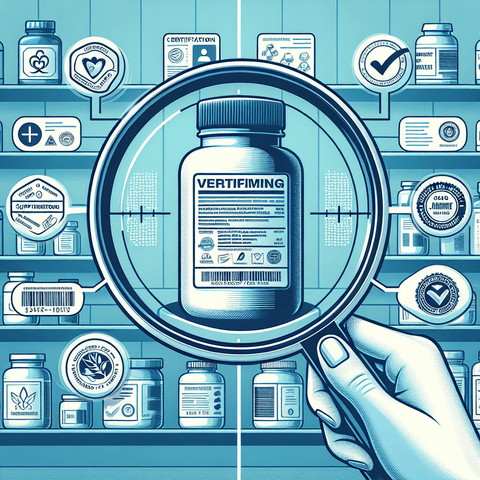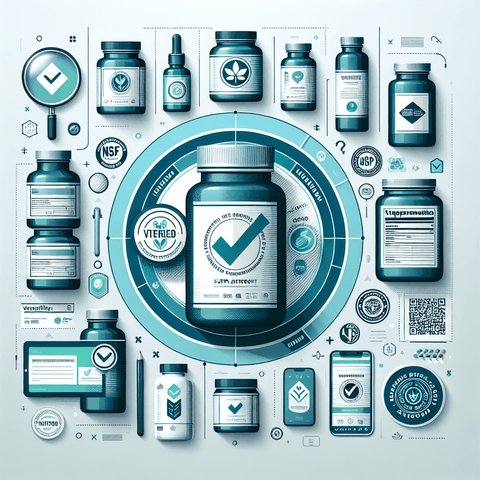Unlocking the Truth About Supplement Labels and How to Spot Fake Products
In recent years, nutritional supplements have experienced a surge in popularity worldwide. More individuals are turning to vitamins, minerals, and botanical formulations to support their health, boost immunity, improve athletic performance, or simply fill nutritional gaps. According to industry reports, the global dietary supplement market was valued at over USD 140 billion and continues to grow steadily. While this growing demand underscores the importance of supplements, it also raises concerns about product authenticity, safety, and efficacy. Given the proliferation of both legitimate and counterfeit products, consumers must become savvy in interpreting supplement labels and recognizing genuine products. The temptation of cheaper prices, attractive claims, and unverified brands can sometimes lead to unintended health risks, especially if the product is fake or mislabeled.
This comprehensive guide aims to demystify supplement labels, teach you how to scrutinize packaging effectively, and empower you with the knowledge to spot counterfeit supplements. By understanding your options and the key indicators of legitimacy, you'll be better equipped to make safe and informed choices. Whether you are a seasoned supplement user or a newcomer, this article provides essential insights to avoid falling victim to scams and to ensure you’re consuming products that are safe, effective, and compliant with regulatory standards.
Understanding Supplement Labels: The Key to Making Informed Choices
Supplement labels serve as the primary communication tool between the manufacturer and the consumer. They are designed not only to provide transparency but also to help customers understand exactly what they are purchasing. Typically, a supplement label includes the ingredient list, serving size, dosage instructions, manufacturer details, warnings, expiration date, batch number, and certification marks. These elements form the backbone of a trustworthy product and help consumers assess its quality.
The ingredient list reveals all active and inactive components, providing insight into whether the supplement contains the claimed nutrients or botanicals. The dosage information ensures you consume an appropriate amount, aligned with scientific recommendations or regulatory guidelines. Manufacturer details help you verify the origin and reputation of the product, allowing you to check for authenticity and compliance. Warnings, allergy information, and expiration dates ensure safe usage, while batch numbers facilitate traceability in case of recall or safety concerns.
Regulatory standards play a vital role in safeguarding consumer interests. In many regions, authorities such as the Food and Drug Administration (FDA) in the U.S. or the European Food Safety Authority (EFSA) set strict labeling requirements that legitimate supplement brands must follow. While regulations vary internationally, transparent and comprehensive labels are a hallmark of legitimate products. These standards help ensure that claims are substantiated, ingredients are accurately represented, and consumers are protected from adulterated or unsafe products.
Proper labeling empowers consumers to compare products effectively, make evidence-based choices, and avoid unsubstantiated health claims. Before purchasing, it is essential to scrutinize labels carefully, verifying that all components align with known safety standards and scientific literature. This foundation of knowledge reduces the risk of inadvertently consuming counterfeit or harmful supplements and enhances overall consumer confidence.
Supplement Label Inspection: What to Look For and How to Do It
Performing diligent label inspection is critical to distinguishing authentic supplements from fakes. Here’s a step-by-step guide to systematically evaluate supplement labels and packaging:
- Examine the Ingredient List: Ensure that all active ingredients are clearly listed with precise quantities. Vague descriptions like “proprietary blend” without specifics raise red flags, as reputable brands disclose exact amounts to provide transparency.
- Check for Expiration Date and Batch Number: An authentic product should have a clearly printed expiration date and batch or lot number, which facilitates traceability. Avoid products with smudged or missing dates.
- Assess Certification Marks: Look for logos from third-party certifiers like NSF International, US Pharmacopeia (USP), or Good Manufacturing Practices (GMP). These certifications validate manufacturing quality and safety standards.
- Verify Label Legibility and Quality: Authentic labels usually feature high-quality printing, consistent font, and proper placement. Blurry or inconsistent printing may indicate counterfeit packaging.
- Compare Product Details with Official Resources: Cross-reference product information with official manufacturer websites or regulatory databases. Many brands provide QR codes or verification tools to authenticate their products.
- Observe Packaging Features: Examine tamper-evident seals, barcode integrity, and packaging quality. Well-made, sturdy packaging with secure seals typically signifies authenticity.
In addition to visual inspection, utilize online resources such as regulatory databases or manufacturer verification tools to confirm product legitimacy. When in doubt, consult reputable health professionals or contact the manufacturer directly. Recognizing these indicators helps prevent accidental consumption of fake or substandard supplements that may contain inferior ingredients, contaminants, or harmful adulterants.
Authentic Supplement Packaging: Recognizing Quality and Standardization
Beyond the label, the packaging itself offers critical clues to product authenticity. Reputable supplement brands typically invest in high-quality, professional packaging that reflects their commitment to safety and compliance. Here are key features to assess:
- Sturdy and Professional Packaging: Authentic products are usually packaged in durable bottles or pouches made from high-quality materials that prevent damage and tampering.
- Tamper-Evident Seals: Seals that break during first opening act as safeguards; any signs of resealing or damage are warning signs.
- Consistent Branding: Logos, font styles, and labeling elements should match the brand’s official appearance. Variations or low-quality printing often indicate counterfeits.
- Clear and Legible Printing: All text, including warnings and ingredient lists, should be sharp and easy to read, without smudging or misalignment.
- Barcode and QR Codes: Scannable codes should lead you to official product pages for verification. Beware of fake codes that do not match official databases.
In contrast, counterfeit or substandard packaging may feature flimsy materials, inaccurate branding, misspellings, inconsistent fonts, and poorly printed labels. Such signs are red flags that warrant further verification before purchase or use.
Verifying Supplement Label Claims: Ensuring the Product Meets Its Promises
Labels often boast various health claims or benefits, but consumers must approach these claims with a critical eye. Overstated or unsupported assertions are common tactics used by illegitimate products to lure consumers. To assess whether the claims on a label are legitimate, consider the following:
- Evaluate the Language Used: Legitimate labels often include phrases like “supports,” “aids,” or “may promote,” rather than definitive or unsubstantiated statements like “cures” or “guarantees” results.
- Check for Scientific References: Reputable products sometimes cite scientific studies or clinical trials. Beware of vague or nonexistent references.
- Use Independent Resources: Search for independent research or third-party testing results. For example, third-party certifications like NSF or USP prove that the product has undergone rigorous testing.
- Compare with Regulatory Guidelines: Confirm that claims align with approved health benefit statements from EFSA or other authoritative bodies.
Trustworthy brands are transparent about their ingredients and do not make exaggerated health claims. Always scrutinize such claims critically and rely on evidence-based information to guide your decisions.
Supplement Label Tampering: Detecting Signs of Unauthorized Alterations
Tampering with supplement labels can have serious health implications. Fake products or those that are adulterated might display signs of unauthorized modifications, including:
- Broken or Resealed Seals: Seals that are damaged or appear resealed indicate potential tampering.
- Misaligned or Inconsistent Labeling: Labels that do not align properly, have inconsistent fonts, or appear to be stickers applied over existing labels could be suspicious.
- Missing or Altered Batch Numbers and Expiration Dates: These critical details might be erased or altered to hide product history.
- Unusual Packaging or Printing: Poor-quality printing, misspellings, or blurriness often suggest counterfeit products.
Always purchase supplements from reputable sources such as licensed pharmacies, official brand websites, or authorized distributors. If you suspect tampering or counterfeit, report the product to relevant regulatory authorities. Your vigilance contributes to consumer safety and helps prevent the circulation of dangerous fake supplements.
Identifying Counterfeit Supplements: Tips to Protect Yourself
Counterfeit supplements are a pervasive issue, fueled by the high demand for popular products and the lure of lower prices. To protect yourself, consider these strategies:
- Be Wary of Low Prices: Extremely discounted products or deals that seem “too good to be true” are common indicators of counterfeits.
- Purchase from Authorized Retailers: Always buy from trusted sources such as official brand websites, accredited online stores, or licensed physical dispensaries.
- Verify Product Legitimacy Online: Use verification tools provided by manufacturers or regulatory agencies. Many brands offer online verification portals or QR code scans to confirm authenticity.
- Check for Consistent Branding and Packaging: Inconsistent logos, font styles, or poor print quality are warning signs.
- Research the Brand and Product: Familiarize yourself with the product’s appearance, packaging, and official distribution channels.
- Report Suspicious Products: If you encounter counterfeit or suspicious supplements, notify regulatory authorities immediately. This action helps protect other consumers and supports enforcement efforts.
By remaining vigilant and knowing how to verify authenticity, you can significantly reduce the risk of purchasing fake supplements. Remember, your health and safety are worth the extra effort to ensure product legitimacy and quality.
Conclusion
Understanding supplement labels is fundamental to making safe and effective choices in a market flooded with numerous options. Proper inspection of labels, packaging, and claims allows consumers to identify authentic products and avoid counterfeit or substandard ones. Recognizing the visual and informational cues that distinguish legitimate supplements—including certified packaging, clear ingredient disclosures, and verified authenticity—further safeguards health. Tampering signs and suspicious price points are additional red flags that should not be ignored.
As a responsible consumer, always purchase from trusted sources, leverage verification tools, and consult healthcare professionals when uncertain. Remember, the goal is not just to buy supplements but to ensure they are safe, effective, and compliant with regulatory standards. Being informed is your best defense against fake products, safeguarding your health and well-being for years to come.
Q&A Section
Q1: How can I tell if a supplement label is fake?
Look for poor print quality, missing or smudged information, lack of certification marks, mismatched branding, and incomplete ingredient lists. Cross-reference the product with the manufacturer’s official website or verification tools. If something seems off, trust your instincts and avoid using the product.
Q2: Why are counterfeit supplements dangerous?
Counterfeit products may contain harmful adulterants, incorrect dosages, contaminated ingredients, or contaminants like heavy metals. They lack quality controls, which can lead to adverse health reactions or interference with medications. Ensuring authenticity reduces these risks significantly.
Q3: What are the best ways to verify a supplement’s authenticity?
Use official verification QR codes or websites provided by brands or regulatory agencies. Purchase from licensed retailers. Check for third-party certification marks like NSF or USP. Additionally, examine packaging carefully for signs of tampering or poor quality.
Q4: How can I avoid buying fake supplements online?
Buy only from reputable sources, such as the official brand website or authorized distributors. Avoid deals that look suspiciously cheap, and verify the product with any available authentication tools. Be wary of unbranded or poorly packaged products from unknown sellers.
Q5: What should I do if I suspect a supplement is counterfeit?
Stop using the product immediately. Report it to relevant authorities like the FDA or local regulatory agencies. Share details such as the seller, packaging photos, and batch number. This helps authorities trace and remove counterfeit products from circulation.
Important Keywords
- Supplement labels
- Fake supplements
- Supplement authenticity
- Counterfeit supplements
- Supplement packaging
- Certification marks
- Supplement verification
- Regulatory standards
- Health claims
- Supplement tampering
- Consumer safety
- Third-party testing
- Manufacturer verification



